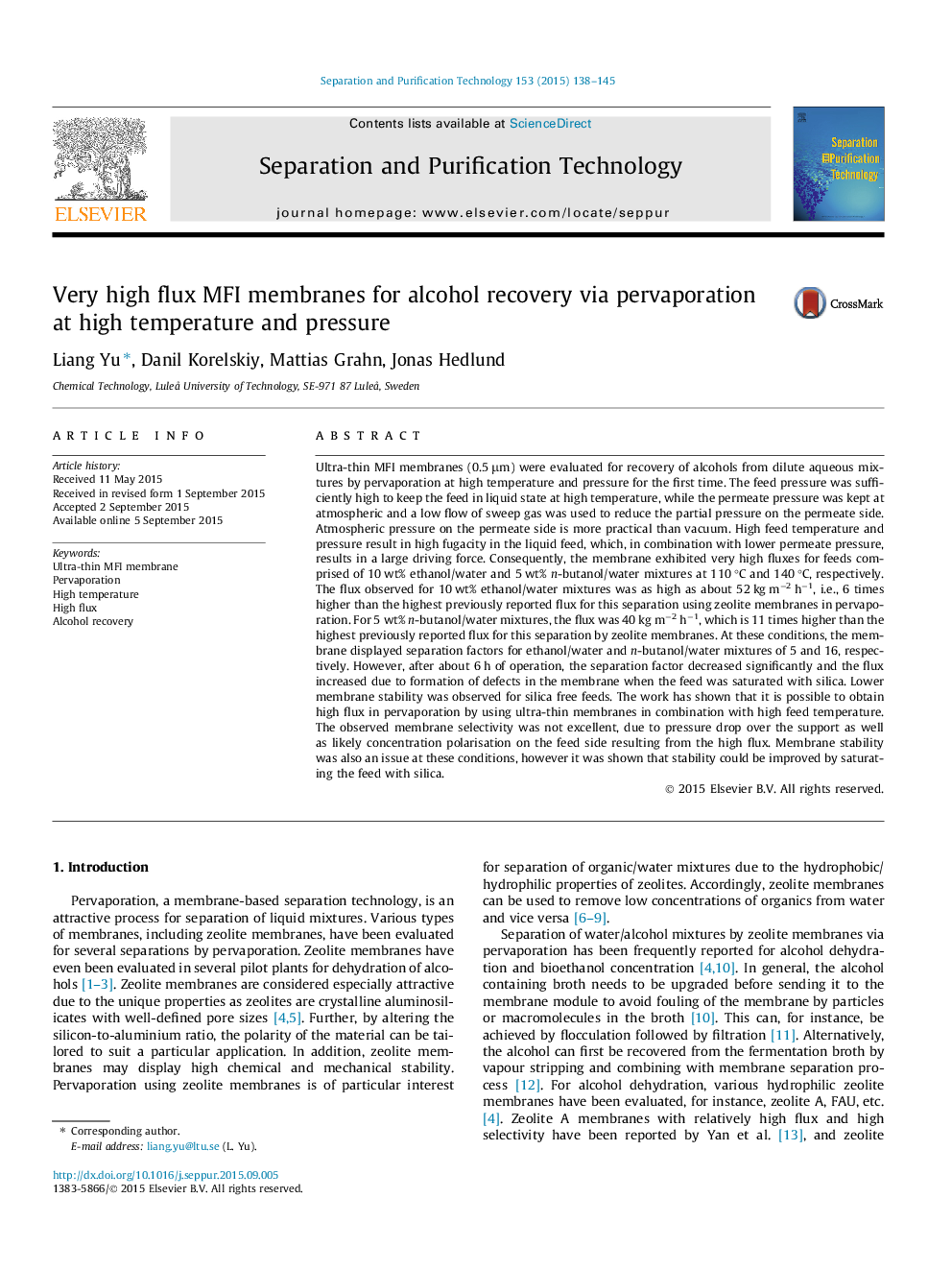| کد مقاله | کد نشریه | سال انتشار | مقاله انگلیسی | نسخه تمام متن |
|---|---|---|---|---|
| 640364 | 1456966 | 2015 | 8 صفحه PDF | دانلود رایگان |

• High temperature and pressure pervaporation was studied with ultra-thin MFI membrane.
• Atmospheric pressure was used on the permeate side instead of vacuum.
• In separation of alcohol/water, the membranes were alcohol selective.
• Very high flux was obtained for separation of ethanol/water and butanol/water mixtures.
• The effect of the support was reduced by the high driving force.
Ultra-thin MFI membranes (0.5 μm) were evaluated for recovery of alcohols from dilute aqueous mixtures by pervaporation at high temperature and pressure for the first time. The feed pressure was sufficiently high to keep the feed in liquid state at high temperature, while the permeate pressure was kept at atmospheric and a low flow of sweep gas was used to reduce the partial pressure on the permeate side. Atmospheric pressure on the permeate side is more practical than vacuum. High feed temperature and pressure result in high fugacity in the liquid feed, which, in combination with lower permeate pressure, results in a large driving force. Consequently, the membrane exhibited very high fluxes for feeds comprised of 10 wt% ethanol/water and 5 wt% n-butanol/water mixtures at 110 °C and 140 °C, respectively. The flux observed for 10 wt% ethanol/water mixtures was as high as about 52 kg m−2 h−1, i.e., 6 times higher than the highest previously reported flux for this separation using zeolite membranes in pervaporation. For 5 wt% n-butanol/water mixtures, the flux was 40 kg m−2 h−1, which is 11 times higher than the highest previously reported flux for this separation by zeolite membranes. At these conditions, the membrane displayed separation factors for ethanol/water and n-butanol/water mixtures of 5 and 16, respectively. However, after about 6 h of operation, the separation factor decreased significantly and the flux increased due to formation of defects in the membrane when the feed was saturated with silica. Lower membrane stability was observed for silica free feeds. The work has shown that it is possible to obtain high flux in pervaporation by using ultra-thin membranes in combination with high feed temperature. The observed membrane selectivity was not excellent, due to pressure drop over the support as well as likely concentration polarisation on the feed side resulting from the high flux. Membrane stability was also an issue at these conditions, however it was shown that stability could be improved by saturating the feed with silica.
Journal: Separation and Purification Technology - Volume 153, 16 October 2015, Pages 138–145